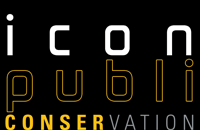
THE LIMITS OF OBJECTIVITY IN CONSERVATION TREATMENT
ΜΑΡΙΑ ΦΙΛΙΠΠΟΥΣΗ ΤΑ ΟΡΙΑ ΤΗΣ ΑΝΤΙΚΕΙΜΕΝΙΚΟΤΗΤΑΣ ΣΤΙΣ ΕΠΕΜΒΑΣΕΙΣ ΣΥΝΤΗΡΗΣΗΣ
By Maria Filippousi
Conference, Byzantine & Christian Museum, 29 January 2003, Mikra Mouseiologika I, Athens 2005.
ISBN:960-214-475-3, pages:43-46
![]() The conservation of icons has a long history of 45 years at the Byzantine and Christian Museum.
The conservation of icons has a long history of 45 years at the Byzantine and Christian Museum.
Today, in the context of the preparation of the new permanent exhibition, icons that have been treated in the past are re-examined and conserved, if necessary.
![]() Conservators thus have the opportunity to return to more general theoretical and technical problems.
The icon-conservation laboratory adopts, broadly speaking, the approach of Italian idealism, advocating moderation and seeking, as far as possible, to minimise the extent of intervention. The various, controversial strains and concepts that have prevailed in the past regarding the desired result of conservation and also the mere lack of scientific examinations in the laboratory, were for a long time the factors that led to the actual general appearance of the treated icons, which reflects these different methodological approaches.
Conservators thus have the opportunity to return to more general theoretical and technical problems.
The icon-conservation laboratory adopts, broadly speaking, the approach of Italian idealism, advocating moderation and seeking, as far as possible, to minimise the extent of intervention. The various, controversial strains and concepts that have prevailed in the past regarding the desired result of conservation and also the mere lack of scientific examinations in the laboratory, were for a long time the factors that led to the actual general appearance of the treated icons, which reflects these different methodological approaches.
![]() Despite the important and generally accepted theoretical framework of the science of conservation at the present day, various strains still exist, making it difficult to achieve as objective as possible a resolution of conservation problems.
These various strains — no matter how reliable their arguments are — ultimately lead to absolutist opinions that cloud our judgement and do not promote conservation.
Despite the important and generally accepted theoretical framework of the science of conservation at the present day, various strains still exist, making it difficult to achieve as objective as possible a resolution of conservation problems.
These various strains — no matter how reliable their arguments are — ultimately lead to absolutist opinions that cloud our judgement and do not promote conservation.
![]() Most of the time they are vehicles of conservators’ and curators’ personal preferences, through which they try to impose their aesthetic concepts on their work.
On the other hand, technological study of a work and documented knowledge of its material structure cannot ensure objectivity in methodology, despite the fact that they support our choices regarding the conservation method to be followed.
Most of the time they are vehicles of conservators’ and curators’ personal preferences, through which they try to impose their aesthetic concepts on their work.
On the other hand, technological study of a work and documented knowledge of its material structure cannot ensure objectivity in methodology, despite the fact that they support our choices regarding the conservation method to be followed.
![]() The conservator faces various objective difficulties, which have to be taken into consideration, such as the ageing of the materials, former restorations, the environmental conditions of the exhibition, etc. He is obliged to convey the historical and aesthetic value of the object, evaluating and judging all the parameters at every moment.
His criteria cannot be strictly technological. In order to reveal the truth of the works, he must regard them¸ above all, with sensitivity and respect the testimony of their creators’ soul.
The conservator faces various objective difficulties, which have to be taken into consideration, such as the ageing of the materials, former restorations, the environmental conditions of the exhibition, etc. He is obliged to convey the historical and aesthetic value of the object, evaluating and judging all the parameters at every moment.
His criteria cannot be strictly technological. In order to reveal the truth of the works, he must regard them¸ above all, with sensitivity and respect the testimony of their creators’ soul.